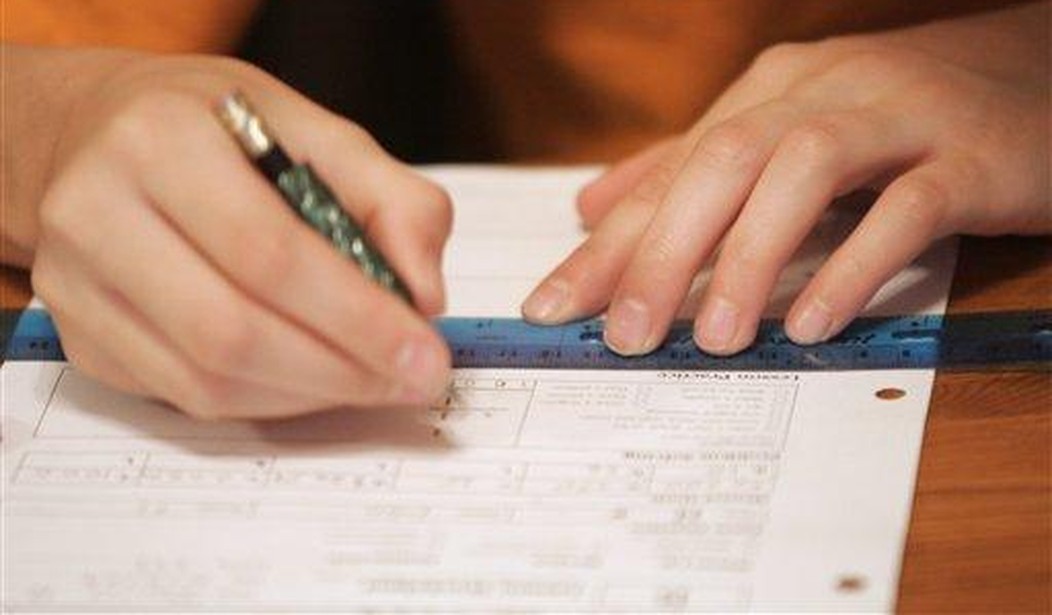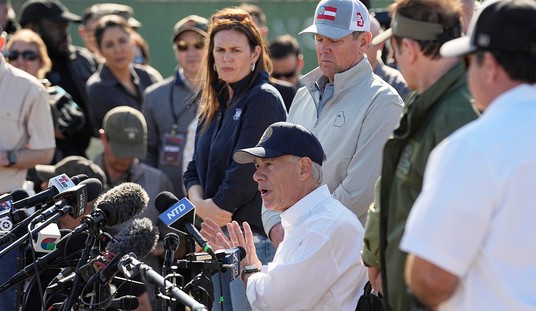Angela Wade’s children hadn’t reached school age yet, so she had given little thought to where, or how, they’d be educated. But from the moment she set foot in her local public school—to vote on Election Day—she knew that she wouldn’t be sending her kids there. It wasn’t that the academics weren’t up to snuff or that the Astoria, Queens, elementary school suffered from a bad reputation. But what she saw in the hallways and on the cafeteria walls surprised this former New York City public school teacher with an education degree from NYU. “There were licensed characters painted on the wall. You know—Dora the Explorer and all these things,” she says. “I just feel like that’s not really the place for advertising.”
For Wade and her husband, and for city dwellers with concerns ranging from classroom environment to the Common Core, public school is out of the question. And for them, as for many urban middle-class families, paying hefty private school tuition is not a realistic option, either. “It wasn’t so much a decision of what we were going to do—it was what weweren’t going to do,” she says. In the end, the Wades opted to homeschool. “Homeschooling is in some ways the easiest option. We’re driving our children’s education. We’re giving up a lot to do it, but in the end we thought it would make us most satisfied.”
At first, the Wades knew no other homeschoolers, and, like many young parents in the city, they had no family nearby, so they prepared themselves to go it alone. Before too long, however, they found a growing network of urban homeschoolers. “In a city like this, you can find your tribe,” says Wade. “You can find your homeschoolers. And there are a lot of us.”
Not so long ago, homeschooling was considered a radical educational alternative—the province of a small number of devout Iowa evangelicals and countercultural Mendocino hippies. No more. Today, as many as 2 million—or 2.5 percent—of the nation’s 77 million school-age children are educated at home, and increasing numbers of them live in cities. More urban parents are turning their backs on the compulsory-education model and embracing the interactive, online educational future that policy entrepreneurs have predicted for years would revolutionize pedagogy and transform brick-and-mortar schooling. And their kids are not only keeping pace with their traditionally schooled peers; they are also, in many cases, doing better, getting into top-ranked colleges and graduating at higher rates. In cities across the country, homeschooling is becoming just one educational option among many.
Recommended
As recently as the mid-1970s, as few as 10,000 children were homeschooled in the United States. The practice was illegal in 30 states, and those who opted for home education mostly clustered in rural areas. Many of the original homeschoolers took inspiration from the writings of John Holt, a former fifth-grade teacher, whose two books, 1964’s How Children Fail and 1967’s How Children Learn, were highly critical of traditional compulsory education. The system had similar contempt for homeschoolers, tending to treat the students as truants and the parents as criminals.
Homeschooling’s expansion began in 1978, when the Internal Revenue Service under President Jimmy Carter threatened to revoke the tax-exempt status of Christian day schools that it accused of using religion-based admissions standards to circumvent federal antisegregation laws. The move to shutter these schools politicized evangelical Christians across the South, Midwest, and West. The IRS ultimately caved on its threats, but the evangelicals took a message away from the battle: the federal government—as embodied by the newly established Department of Education—was out to get them. “What galvanized the Christian community was not abortion, school prayer, or the ERA,” Moral Majority founder Paul Weyrich told sociologist William Martin for his book With God on Our Side. “[It] was Jimmy Carter’s intervention against the Christian schools. . . . [S]uddenly it dawned on them that they were not going to be left alone to teach their children as they pleased.”
Rather than wait for the next federal attack on their values, many evangelicals instead chose to educate their children where they felt the long arm of the government could never reach—in the home. By 1983, with the rise of the Religious Right and the formation of the Home School Legal Defense Association, the number of homeschooled children in the United States had ballooned to between 60,000 and 125,000. Thanks largely to the state-by-state advocacy of HSLDA lawyers, legal barriers to homeschooling began falling in the 1980s. By 1993, the practice was legal in all 50 states, though some remain suspicious (see sidebar, below).
Since then, the homeschooling population has continued to grow dramatically, while also becoming more secular. In 2002, according to a DOE survey, 72 percent of homeschooling families cited “a desire to provide religious instruction” as one of their reasons for educating in the home. By 2012, 64 percent cited religion as a motive for homeschooling; only 16 percent called it most important. “Most people assume we’re doing it for some sort of strange, creationist religious reason,” says Rachel Figueroa-Levin, a homeschooler who lives in Inwood, a middle-class neighborhood at the northernmost tip of Manhattan. “But we are stereotypical secular Jews.” Indeed, concern about “the environment of other schools” has supplanted religion as the Number One reason given for homeschooling, according to the DOE survey. Ninety-one percent of homeschooling parents cited school environment as at least a contributing factor.
Over the last few decades, the homeschooling population has also urbanized. According to the National Center for Education Statistics, 28 percent of the nation’s nearly 2 million homeschoolers, or roughly 560,000 students, live in cities. That’s almost as many as live in suburbs (34 percent) or rural areas (31 percent). Boston, Philadelphia, and Los Angeles are home to swelling communities of homeschoolers. And in the nation’s largest city—New York—the number of homeschooled students has risen 47 percent, to more than 3,700 children, over the last five years.
Like other homeschoolers these days, urbanites choose homeschooling for various reasons, though dissatisfaction with the quality and content of instruction at local public schools heads the list. “I got through public school, but it was never something I thought was an option for my children,” says Figueroa-Levin. A native Staten Islander, she is a columnist for amNewYork, a free daily newspaper, and creator of the satirical Twitter account @ElBloombito, which gained 76,000 followers for its gentle skewering of former mayor Michael Bloomberg’s halting attempts at press-conference Spanish. She calls her local public school “awful,” but she’s not interested in moving to a more desirable school zone, as some New Yorkers with small children do. “We like where we live. We have a nice-size apartment. Sacrificing all that for a decent public school just doesn’t seem worth it,” she says.
But even after more than a decade of aggressive education-reform efforts, the “decent public school” remains a rarity in New York and in other American cities. With urban public schools inadequate or worse and quality private schools often financially out of reach, “homeschooling becomes an interesting study in school choice,” observes Brian Ray, founder of the National Home Education Research Institute (NEHRI) in Portland, Oregon. “You pay taxes, so the public school system in your city gets that money, then you can make the ‘choiceo of paying even more to send your kid to a private school, or to a Catholic school. More and more people are saying, ‘I’m going to homeschool.’ It’s not that weird anymore.”
Homeschooler Gwen Fredette lives in Philadelphia with her husband and four children. “Our school system has a lot of problems,” she says. That’s an understatement: Philadelphia public schools are in flat-out crisis. After a video of a 17-year-old student knocking a “conflict resolution specialist” unconscious at Southwest Philadelphia’s Bartram High went viral last year, a social studies teacher at the troubled school told thePhiladelphia Inquirer, “I had a better chance in Vietnam. . . . Here, you lock your door and pray no one comes in.”
Nor is violence the only concern in the city’s public schools. A Centers for Disease Control and Prevention study found that 60 percent of West Philadelphia schools had serious problems with mold or water damage. Budget shortfalls have left schools without nurses and made a collapsing public-education system “a chronic and seemingly immutable fact of life,” according to Philadelphia Magazine. Academic outcomes are horrendous. Just 10 percent of graduates from the city school district go on to get college degrees. The National Assessment of Educational Progress ranks Philadelphia near the bottom of participating cities: less than 20 percent of the city’s fourth- and eighth-graders score proficient or better in math and reading.
Fredette took one look at her local zoned school and, like Angela Wade, ruled it out. But she and her husband didn’t want to abandon a life that they enjoyed. “There are so many great things about living in the city—you kind of agree to take the good with the bad,” she says. Fredette loves that her older children use public transportation to get around. They have made friends from different cultures and backgrounds, something she’s not sure would have happened in the suburbs.
On the other side of the country, in Los Angeles, the entertainment industry has long sustained a homeschooling culture for performers. “Thousands and thousands of homeschoolers” live in the area, says Anna Smith, who runs Urban Homeschoolers, an “a la carte educational service” for about 40 homeschooling families in the Atwater Village neighborhood of northeast L.A. (See “City of Villages,” Winter 2014.) “There’s a great support network because there are tons of parents,” Smith says. At Urban Homeschoolers, younger students take courses such as “Wonder of the Alphabet” and “World of Numbers.” High school–aged kids can select from titles including “Conversational Spanish” and “The Legacy of the Cold War.” In a nod to homeschooling’s countercultural roots, there’s even a course called “Skepticism 101,” which promises to let students do their own “myth-busting.”
One myth that needs busting is that homeschoolers dream of re-creating the one-room schoolhouses of yesteryear. “Public schools were designed in a time when people were working in factories and offices and had the same job for 30 or 40 years. That’s not the way the world is anymore,” says Smith. “Nowadays you can get anything customized,” she says, including children’s educations, and modern communications technology and Internet-based curricula have enabled homeschoolers to do just that. Customization is not typically what traditional schools do well—certainly not in the sclerotic school districts of the nation’s biggest cities.
Lousy as the public schools often are, urban parochial schools don’t always measure up, either. Ottavia Egan grew up in Italy, the daughter of an American mother and an Italian father. Today, she lives on 72nd Street on Manhattan’s Upper East Side with her husband, Patrick, and their four kids. The Egans’ middle school–aged daughter had attended a local parochial school, where the books assigned tended toward “junky” literature, paranormal horror stories, and vampire-themed fiction. “These were the only kinds of books my daughter would read willingly. I had to plead with her to give the classics a try,” she says.
Ottavia admits that the thought of detaching from the traditional school model terrified her. She worried that, as a homeschooler, she would have to do everything herself. But she soon sensed that she had made the right choice. “My daughter is the type of kid who needs to ask a lot of questions. On the first day, she had 12 questions for me in the first hour. She never would have had those questions answered at school.”
























Join the conversation as a VIP Member